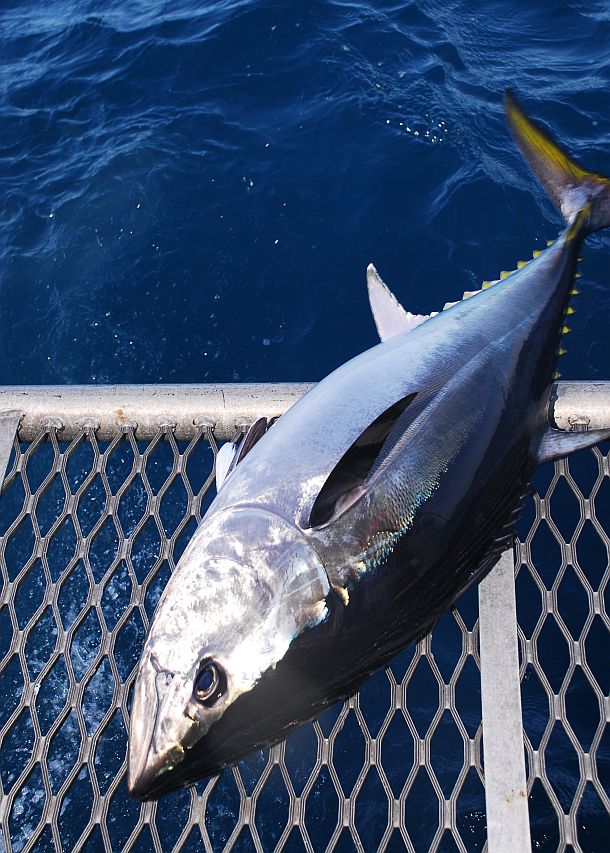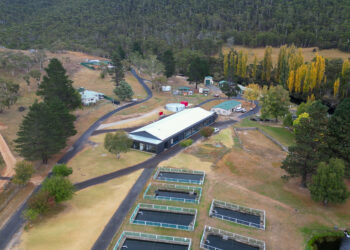LONGLINERS currently targeting southern bluefin tuna off the east coast are reportedly dumping large numbers of the prized fish because they don’t bring enough money at the markets.
A source with close links to the longline industry this week told Fisho that an east coast vessel recently unloaded about 10 tonnes of SBT but “dumped about the same amount of fish because they came up dead on the lines”.
As Fisho understands it, SBT that die on the longlines are worth less than fish brought on board alive. It’s understood the dead fish have inferior quality meat and don’t attract high prices at the fish markets.
Australian longline vessels targeting SBT are subject to strict quotas. Since they can only catch and sell as many fish as their quota allows, it makes financial sense for the boats to only keep prime quality tuna.
According to the source, it is “routine for tuna that die on the line to get cut off and thrown back so the boat can get a full quota of prime quality fish”.
It’s understood that some longlines can take many hours to retrieve with significant percentages of hooked SBT dying before they can be landed. So far this season, AFMA’s onboard observers have reported that around a quarter of SBT are dead when they were brought to the boat.
The source goes on to say that all or most of these dead fish would be “dumped”.
While the thought of these magnificent – and endangered – gamefish being wasted in this fashion is likely to cause outrage amongst the recreational fishing community, it seems the longline industry will come under increased scrutiny from next season.
Fisho approached AFMA CEO Dr James Findlay about what AFMA is doing to tackle the issue.
“The unreported discarding of SBT by longliners is an issue that AFMA has been very well aware of for some time,” Dr Findlay told Fisho yesterday.
“Unfortunately, there are still some instances where people are doing the wrong thing.”
Various management protocols – including access restrictions – have already been introduced to prevent the longline fleet from taking and discarding SBT while fishing for yellowfin, bigeye and swordfish, Dr Findlay said.
“These conditions prevent longliners who don’t hold SBT quota from fishing in areas and times when bluefin are likely to be caught.”
But Dr Findlay acknowledges that while these measures are having some impact, more still needs to be done to prevent vessels which do hold SBT quota “upgrading” their catch by dumping so-called “inferior” fish.
In order to address that issue, the AFMA chief made it clear that any commercial vessels catching SBT and throwing them back without reporting it were acting illegally.
“Any vessels we suspect of doing so will be investigated and may be prosecuted where there is sufficient evidence,” Dr Findlay said.
Information given to Fisho reveals that AFMA currently uses increased levels of observer coverage during the SBT run off the east coast to collect independent data on commercial SBT catches.
“The minimum at-sea observer coverage rate during the SBT run off the east coast is 20 per cent. Any mortalities that are reported by the observer but not reported by the vessel are deducted from the vessel’s quota,” Dr Findlay said.
“If the risk of unreported catch is still considered too high, AFMA increases the observer coverage requirements accordingly. This may go right up to 100 per cent.”
Fisho understands that observers cost about $1500 per day. Individual longline vessels are required to fully cover those costs.
“Thus there is an incentive for (the longliners) to make sure they have enough quota and are correctly managing their vessels,” Dr Findlay said.
“Despite this, we are aware that some boats will still try to get around the quota system from time to time. To address this, for next year’s SBT run off the east coast AFMA will require all longline vessels to carry an AFMA-approved, tamper-proof camera system that will enable us to monitor all catches of SBT and other species.
“We think these systems will be a game changer for Commonwealth fisheries management, especially when it comes to making sure vessels are complying with the rules,” Dr Findlay said.
“A majority of commercial fishing vessels do the right thing and realise the importance of compliance for the sustainability of Australian fisheries.
“Those illegally fishing are simply destroying their livelihood and that of their fellow fishermen which AFMA is seeking to protect.”
Anglers witnessing suspicious behaviour by longliners or other commercial fishing vessels should call 1800 CRIMFISH (1800 274 634).
The issue of some commercial operators allegedly dumping large numbers of bluefin comes as the federal Government is reportedly pressuring state fisheries departments to impose stricter recreational limits on the species.
Fisho has also been made aware that authorities are concerned that a small number of irresponsible recreational anglers may be “upgrading” their SBT catches. Fisho reminds anglers that SBT are prime candidates for C&R. We also make the observation that one 40-60kg SBT will supply enough fresh fish to feed an army …
More information on AFMA’s management of longline catch of SBT off the east coast of Australia can be found at www.afma.gov.au.

















